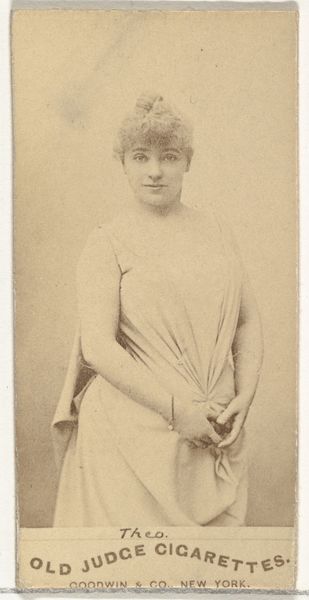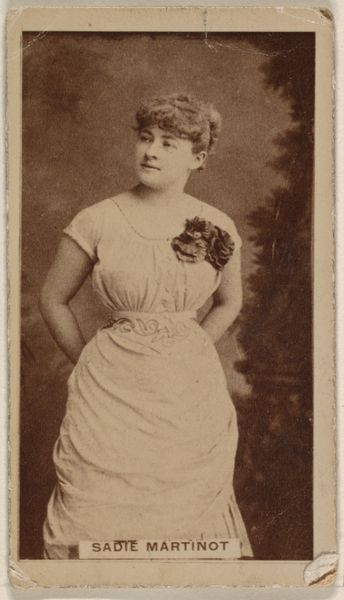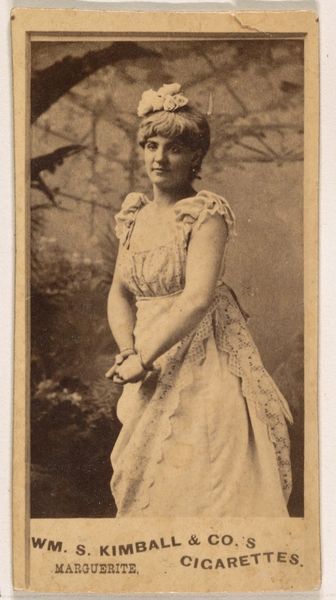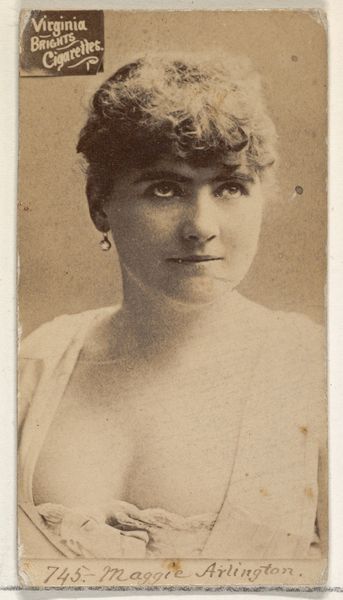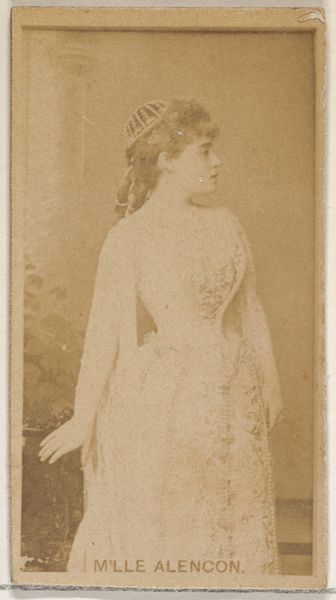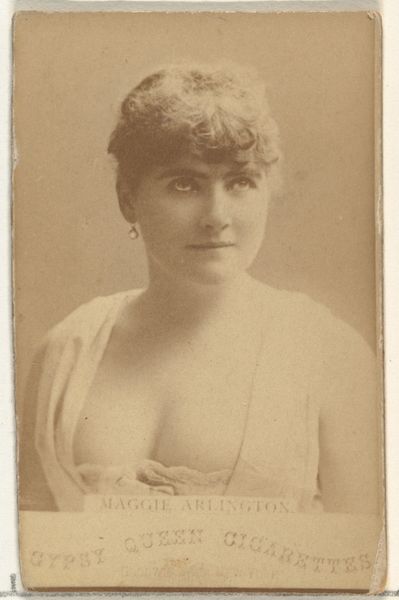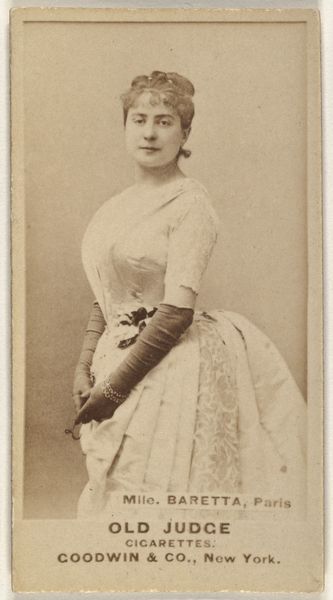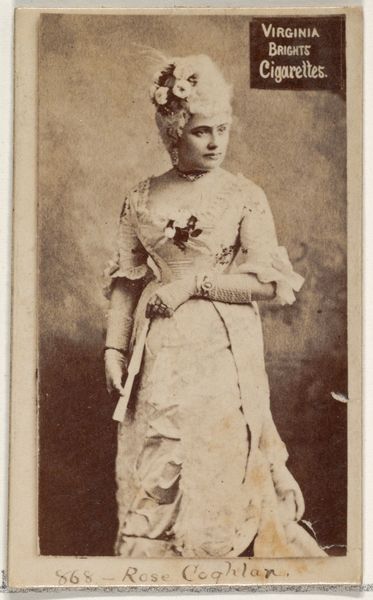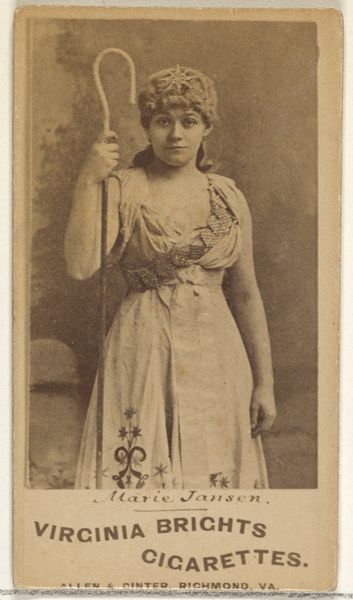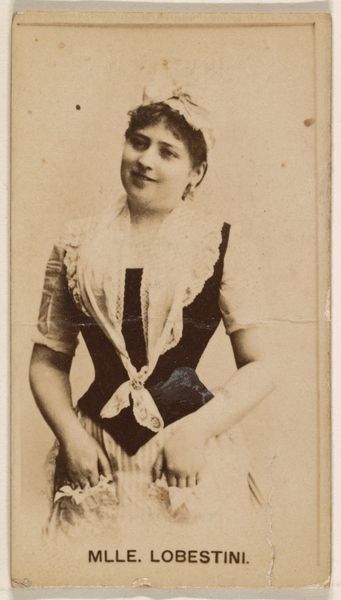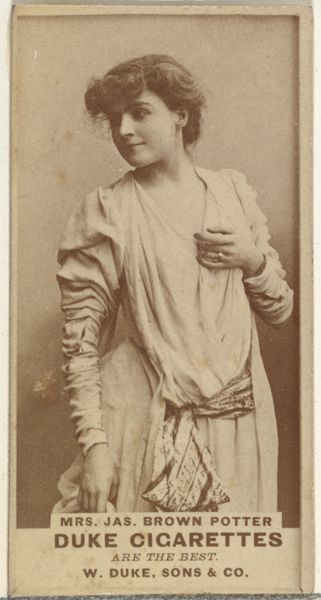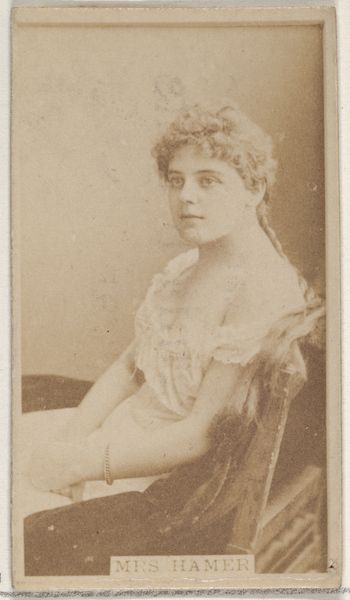
Card Number 322, Emily Melville, from the Actors and Actresses series (N145-3) issued by Duke Sons & Co. to promote Cross Cut Cigarettes 1880s
0:00
0:00
drawing, print, photography
#
portrait
#
drawing
# print
#
figuration
#
photography
#
historical photography
#
19th century
Dimensions: Sheet: 2 11/16 × 1 3/8 in. (6.8 × 3.5 cm)
Copyright: Public Domain
Editor: This is a photographic print from the 1880s, "Card Number 322, Emily Melville," by W. Duke, Sons & Co. It's fascinating because it’s clearly an advertisement for cigarettes. I’m immediately curious how such an elegant portrait of an actress ended up promoting tobacco. What do you see when you look at this piece? Curator: It’s all about context. Tobacco cards like these were essentially early trading cards, inserted into cigarette packs to stiffen the packaging and entice consumers. What appears to be high art, a photographic portrait, is being mass-produced and consumed as a cheap commodity, packaged with a product known to cause addiction. How does that clash affect your understanding of Melville’s image? Editor: It's almost… degrading? To see her beauty used in such a transactional way, and knowing the exploitation inherent in that kind of advertising. Did Melville have any say in this, or was she just another element in the Duke company's marketing machine? Curator: Exactly. The mass production of images alters our relationship to the subject. The materials – cheap paper, mass printing – point to the scale of the industry and its reach. These cards were not meant to last; their value resided in their immediate, disposable function to sell more cigarettes. Consider the labor involved in producing these cards, from the photographers to the factory workers. How does that shift your view of the "best" cigarettes, as the card proclaims? Editor: It makes me question the whole notion of 'best.' Whose best are we talking about? Certainly not Emily Melville's, potentially not the factory worker's, probably just W. Duke Sons & Co's shareholders'. Seeing the advertisement not just as an image, but as an artifact of material culture really shifts its meaning. Curator: Precisely. Examining the materials and means of production allows us to decode the social relations embedded within the image itself. It makes us critically aware of the consumer culture of the time and its legacy today. Editor: I’ll never look at an old advertisement the same way again. Thinking about the hidden stories behind the materials makes it so much more powerful, or rather, exposes its inherent power structures.
Comments
No comments
Be the first to comment and join the conversation on the ultimate creative platform.
